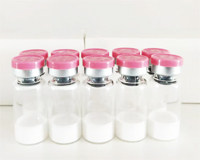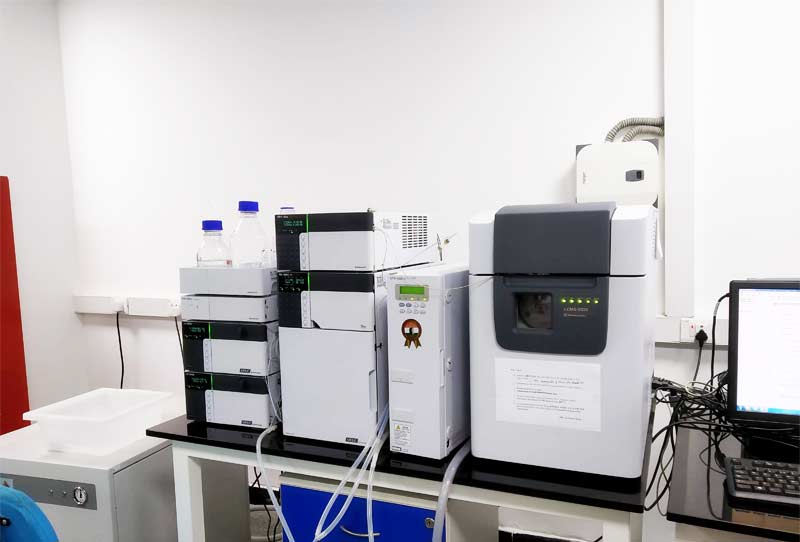Peptide Reconstitution Guide
All peptides provided on this website are only used for scientific research purposes. Omizzur Ltd is a peptide synthesis company that provides high-purity peptide products to pharmaceutical research and development companies worldwide. This article is about peptides reconstitution with a length of 1000 words and reading time of 3 minutes.
Keywords: peptide reconstitution guide, how to reconstitute peptides, peptide dissolution
Brief Description: What are peptides?
 Peptides are chemical substances that are composed of amino acids in a certain order. In the peptide laboratory, scientists perform a process of synthesis, purification, detection, and freeze-drying on it.
Peptides are chemical substances that are composed of amino acids in a certain order. In the peptide laboratory, scientists perform a process of synthesis, purification, detection, and freeze-drying on it.
The delivered peptide products include peptide freeze-dried powder (stored in penicillin vials or lab tubes), analysis reports, and transportation documents etc.
Peptides should be stored below -15-20 ℃ for long-term storage After the peptide is dissolved, its storage time will be greatly shortened, Different peptide products require different dissolution conditions.
Omizzur team recommend to first test the optimal dissolution method with a small amount of peptide. Only after the peptide is completely dissolved can the solution be added and diluted to the final concentration: Dissolve first, then add buffer solution. Note: Always add peptides to appropriate solvents and stir, and do not use other methods.
Generally speaking, the solubility of peptides is closely related to the amino acid sequence of the entire peptide chain. Generally, when acidic peptides are difficult to dissolve, an appropriate amount of alkaline solution can be added, while when alkaline peptides are difficult to dissolve, an appropriate amount of acidic solution can be added.
When the sequence contains a large number of hydrophobic or neutral amino acids, it is difficult to directly dissolve in water, and a small amount of organic solvent usually needs to be added first, After complete dissolution, dilute with a large amount of distilled water. Commonly used organic solvents include acetonitrile, DMSO, DMF, propanol, isopropanol, etc.
Most peptides are soluble in sterile distilled water. When dissolving for the first time, it is important to ensure that the initial concentration is higher than the required concentration. If the solubility of peptides in water is limited, there are several options to help with dissolution:
Dilute acetic acid (containing Arg, Lys, His) is used for alkaline peptides.
Diluted ammonia water (containing Asp and Glu) for acidic peptides.
10% organic modification of highly hydrophobic peptides (Acetonitile, Methanol).
Extremely insoluble peptides using DM50 or DMF.
Concentrated solutions of guanicline hydrochloride or urea are also useful.
Increases Peptide Solubility Through Peptide Modification:
1. Modify the C-terminal and N-terminal of the peptide chain: For acidic peptides, we recommend C-terminal acetylation modification, and for alkaline peptides, we recommend N-terminal amination modification.
2. Modify the amino acid sequence in the peptide chain: Some sequences contain a large number of continuous hydrophobic amino acids, such as W, F, V, I, L, M, Y, etc. When these hydrophobic amino acids appear in large quantities or repeatedly in the sequence, the entire peptide chain is usually insoluble.
In order to enhance the polarity and hydrophilicity of peptides, we also recommend customers to extend the sequence without affecting the experimental results, or increase solubility by reducing the number of hydrophobic amino acids.
3. Replace the residues of hydrophobic amino acids in the sequence: Replacing hydrophobic amino acids in the sequence with soluble amino acids can achieve the effect of increasing solubility. We usually replace hydrophobic amino acids with Gly and Ala, which generally achieve good solubility. This is also a conservative but effective method to help peptide reconstitution.

FAQs:
Peptide Secondary Structure
The main problem in peptide dissolution is the formation of secondary structures. Although the formation of the secondary structure of hydrophobic peptide chains is more pronounced, this phenomenon occurs in almost all peptide chains, independent of polarity, except for the shortest peptide chain.
Therefore, the first principle for dissolving peptides is to use sterile distilled water or deionized water (if conditions permit, use anaerobic water).
High Concentration Membrane Denaturant
High concentration membrane denaturants aid in solubilization by disrupting the secondary structure of peptides. Membrane denaturants are suitable for the preparation of peptide analysis solutions, but may interfere with the research on their biological activity. DMF is the optimal denaturant (with a maximum concentration of up to 30%), added dropwise until the peptide dissolves.
Bacterial Degradation
Peptide solutions may experience bacterial degradation. To avoid this phenomenon, peptides should be dissolved in sterile distilled water or filtered with a 0.45 or 0.2 µ m pore size filter membrane for sterilization.
Peptide Oxidation
Peptides containing Cys, Met, and Trp are particularly prone to oxidation, so they should be soluble in oxygen free water. Oxygen free water can be obtained by injecting inert gases (nitrogen, helium, argon) under reduced pressure for degassing.
Ultrasound Assists Peptide Dissolution
If peptides are insoluble in pure water, ultrasonic treatment can help break particles and increase solubility. Attention: Ultrasonic treatment can cause solution heating and peptide degradation.
Acid/alkaline Amino acids
If the peptide contains multiple alkaline amino acids, use a solution of 1-10% acetic acid in water; For peptides with strong hydrophobicity, 50% acetic acid is used.
If the peptide contains a large amount of acidic amino acids, it can be dissolved in a volatile alkaline buffer solution such as 1-10% ammonia solution or ethyl morphine acetate or bicarbonate. The pH value must be adjusted before chromatography.
Hydrophobic Peptide
If the peptide is highly hydrophobic or neutral due to the presence of aromatic chains such as Val, Leu, Met, Phe, Tyr, Ala, etc., the use of membrane denaturants such as DMF or DMSO is beneficial for the dissolution of the peptide.
Peptide Preservation
Preservation of Freeze-dried Peptides
All products should be stored in a refrigerator, preferably at -20 ℃. Most peptides can be stored unchanged for several years using this method.
Preservation of Peptide Solution
Solution peptides are much more unstable than freeze-drying forms, and the solution should be at a neutral pH (pH5-7) and stored at -20 ℃. To avoid repeated freeze-thaw of the sample, it is best to store it in small samples. A sample that has not been used up after thawing should be discarded.
Bacterial degradation can sometimes become a problem with peptide solutions. To overcome this, peptides should be dissolved in sterile water or peptide solutions should be diluted with 0.2 μ M membrane filtration.
Customer Service Center
 Need Quote Request :
Need Quote Request :
* Please mail us your peptide sequences / structural formula, CAS (if any), Omizzur customer services will get in touch with you within 1 hour.
>> Join our peptide group on Linkedin:
https://www.linkedin.com/groups/13982091/
>> Join our peptide group on Facebook:
https://www.facebook.com/groups/675602101259478
Read Related Articles:
Copyright © 2020 Omizzur Inc | Terms & Conditions | Privacy Notice | Sitemap